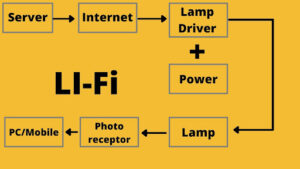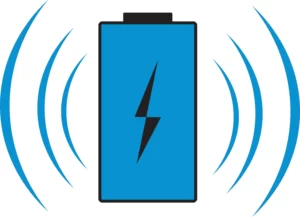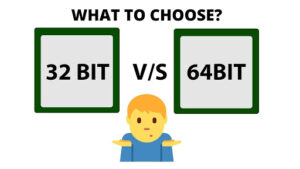
what is wireless charging
What is Wireless Charging? A Complete Guide to the Future of Charging Technology
Wireless charging is the future of charging technology that is becoming more and more popular every day. It is a convenient and easy way to charge your devices without the need for cords or cables. In this article, we will explore everything you need to know about wireless charging, including how it works, the benefits of using it, the different types of wireless charging, and much more.
Wireless charging technology is now provided in almost every company’s flagship phone. Many people think that this wireless charging technology may be a new thing. But not at all. About 120 years ago today, the great scientist Nikola Tesla said that electrical charges could be transferred by a wireless system. But at that time he could not make it. However, at present, this technology is fully developed and is working properly.
What is Wireless Charging?
Inductive charging, commonly referred to as wireless charging, is a technology that enables the charging of electronic devices without requiring cords or cables. Wireless charging operates by utilizing an electromagnetic field to transfer energy between two objects. This process is known as electromagnetic induction. The wireless charging system consists of a charging pad and a device that needs to be charged. A power source is used to connect the charging pad, which then produces an electromagnetic field.
The device that needs to be charged has a receiver coil that is located inside the device. When the device is placed on the charging pad, the electromagnetic field generated by the charging pad induces a current in the receiver coil, which is then used to charge the device’s battery.
How Does Wireless Charging Work?
Wireless charging uses the principles of electromagnetic induction to transfer energy between two objects. When an electric current passes through a wire, it generates an electromagnetic field around the wire. This electromagnetic field can then be used to transfer energy between two objects. To charge a device wirelessly, a charging pad generates an electromagnetic field that induces a current in a receiver coil located inside the device. The current generated by the electromagnetic field is subsequently utilized to charge the battery of the device.
Wireless technology usually works in two ways. 1) Conduction and 2) Induction
1) Conduction:–
In this method, the connection of the phone charger is given on the top of the charging pad. On the other hand, there is a connector in the specific place of the phone. This is how the phone is charged in the conduction method. Many people do not agree with calling the conduction system a wireless charging system.
2) Induction: –
At present, this method is used in almost every phone as a wireless charging system. In the induction method, the charging pad has a coil. This coil looks a bit like the coil of an induction cooktop. On the other hand, mobile phones also have such a coil. When the phone charger is connected to the charging pad, induction is created in the coil of the charging pad and in this induction method, the charge is transferred from the charging pad to the phone by the wireless method when you place the phone on top of the charging pad. Inductive charging
The wireless system loses much more charge
than the wired system. That’s why it takes a long time to charge the phone
wirelessly.
What are the Benefits of Using Wireless Charging?
Wireless charging offers a number of benefits over traditional charging methods. Here are some of the most appreciable benefits:
Convenience
Convenience is one of the most significant benefits of wireless charging. With wireless charging, you don’t need to worry about cords or cables.
All you need to do is place your device on the charging pad and it will begin charging automatically. This makes wireless charging ideal for use in public places, such as coffee shops, airports, and hotels.
Safety
Wireless charging is a safer option compared to traditional charging methods. There is no risk of electric shock, as there are no exposed wires or contacts. This makes wireless charging a good choice for households with young children.
Efficiency
Compared to traditional charging methods, wireless charging is also more efficient. It eliminates the need for cords and cables, which can become damaged over time. This means that your devices are less likely to become damaged or break.
What are the Different Types of Wireless Charging?
There are two primary types of wireless charging: Qi and Powermat.
Qi Wireless Charging
Qi is the most popular wireless charging standard. It was developed by the Wireless Power Consortium and is used by many smartphone manufacturers, including Apple, Samsung, and LG. Qi charging pads typically use a circular charging coil to generate an electromagnetic field.
Powermat Wireless Charging
Powermat is another wireless charging standard. It was developed by Powermat Technologies and is used by many coffee shops, airports, and other public places. Powermat charging pads typically use a rectangular charging coil to generate an electromagnetic field.
What Devices Are Compatible with Wireless Charging?
Not all devices are compatible with wireless charging. To be compatible with wireless charging, a device must have a receiver coil that can pick up the electromagnetic field generated by the charging pad. Many smartphones, including the iPhone 12, Samsung Galaxy S21, and Google Pixel 5, are compatible with wireless charging. Other devices, such as smartwatches, headphones, and tablets, are also compatible with wireless charging.
How Do You Use Wireless Charging?
Using wireless charging is simple. Here’s how to do it:
- Plug the charging pad into a power source using the included cable.
- Place your device on the charging pad. Make sure that the receiver coil on your device is aligned with the charging coil on the pad.
- Wait for your device to start charging. You should see a notification on your device that it is charging.
- When your device is fully charged, remove it from the charging pad.
What Are the Disadvantages of Using Wireless Charging?
While wireless charging offers many benefits, there are also some disadvantages to consider. Here are some of the most exceptional disadvantages:
Slower Charging
In general, wireless charging is slower compared to traditional charging methods. This is because the charging pad generates a weaker electromagnetic field than a charger with a cable. This means that it takes longer to charge your device.
Heat Generation
Wireless charging can generate heat, which can damage your device’s battery. If your device gets too hot while charging, it can cause the battery to degrade more quickly.
Range Limitations
Wireless charging has a limited range. Your device must be placed directly on the charging pad to charge. This means that you can’t use your device while it is charging, which can be inconvenient.
How Do You Choose a Wireless Charging Pad?
If you want to use wireless charging, you will need to choose a charging pad that is compatible with your device. Here are some things to consider when choosing a charging pad:
Compatibility
Make sure that the charging pad you choose is compatible with your device. To determine if your device supports wireless charging, please check the device’s specifications.
Charging Speed
Consider the charging speed of the charging pad. Some charging pads offer faster charging speeds than others.
Size and Design
Choose a charging pad that is the right size for your device. You should also consider the design of the charging pad. Some charging pads are more aesthetically pleasing than others.
Brand and Price
Consider the brand and price of the charging pad. Some brands are more reliable than others, and some charging pads are more expensive than others.
Conclusion
Wireless charging is a convenient and easy way to charge your devices without the need for cords or cables. It offers many benefits over traditional charging methods, including convenience, safety, and efficiency. There are two principal types of wireless charging: Qi and Powermat. Not all devices are compatible with wireless charging, so make sure that your device has a receiver coil before purchasing a charging pad. While there are some disadvantages to using wireless charging, the benefits make it a great choice for many people.
FAQs
- Is wireless charging safe? Yes, wireless charging is safe. There is no risk of electric shock, as there are no exposed wires or contacts.
- Can I use wireless charging with any device? No, not all devices are compatible with wireless charging. Your device needs to have a receiver coil that can pick up the electromagnetic field generated by the charging pad.
- Is wireless charging faster than traditional charging methods? No, wireless charging is generally slower than traditional charging methods.
- Can wireless charging damage my device’s battery? Yes, wireless charging can generate heat, which can damage your device’s battery if it gets too hot.
- How do I choose a wireless charging pad? When choosing a wireless charging pad, consider compatibility, charging speed, size and design, brand, and price.




